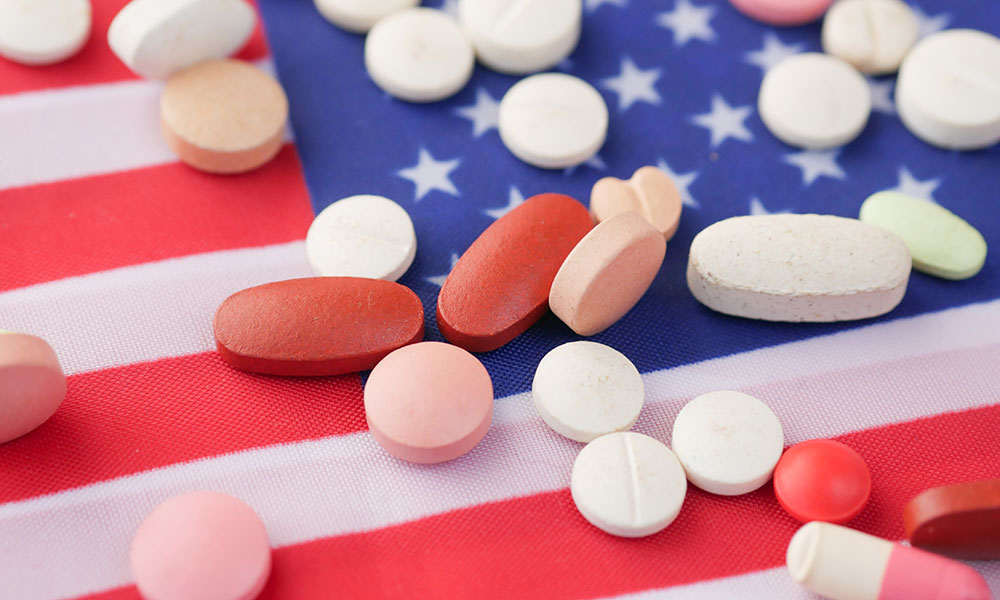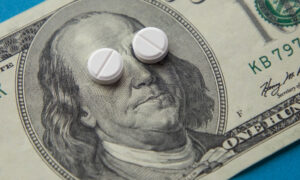Editor’s note: This op-ed was originally published in Barron’s on May 6, 2025.
In early April, President Donald Trump threatened the pharmaceutical industry with a 25% tariff, in addition to import tariffs announced on “Liberation Day.” His administration is now “investigating” whether those tariffs are needed for national security purposes. There are real problems with the supply chains that produce the medications Americans need. But the current tariff plan would threaten to exacerbate drug shortages and raise prices for Americans for years to come.
Trump is right to raise concerns about the globalization of the drug supply chain. The U.S. currently imports more than $200 billion in pharmaceuticals each year. While the active ingredients in drugs are often developed by U.S.-based pharmaceutical companies, about 80% of them are manufactured abroad. Generic drug manufacturing is especially concentrated overseas, primarily in India and China, due to those countries’ significantly lower labor costs, less stringent environmental requirements, and less regulatory red tape. Of course, some formulation and packaging of brand-name and generic drugs occurs within the U.S., but our reliance on foreign sources, especially for active ingredients, rightfully prompts anxieties about supply chain resilience and national security.
Covid-19 should have been a wake-up call about the ways pharmaceutical supply chains can break in a crisis. About one-third of factories in China shut down, at least temporarily, during the pandemic. India, the world’s largest producer of generic drugs, imports 70% of its active ingredients from China. To ensure its domestic stockpile, the Indian government restricted the export of its medications. The U.S. then faced shortages of critical medications, including antibiotics, sedatives, and ventilator-related drugs.
A number of major drug companies, including Eli Lilly, Novartis, Roche, and Regeneron, have already announced plans for billion-dollar domestic manufacturing investments. It could take as much as three to seven years to increase domestic production, while tariffs are likely to come far sooner. The administration wants to force more immediate increases in capacity. But doing so would be prohibitively expensive and lead to immediate drug shortages and rising prices. U.S. companies boosted their pharmaceutical imports by nearly 60% in March in an apparent attempt to mitigate those effects in the near-term, according to the U.S. Bureau of Economic Analysis.
A more effective template for reshoring domestic drug manufacturing exists in CivicaRx. CivicaRx is a nonprofit generic pharmaceutical company established in 2018 by a coalition of major U.S. health systems, including Intermountain Healthcare, Mayo Clinic, and HCA Healthcare, to address chronic drug shortages in U.S. hospitals. The organization manufactures medications directly and partners with Food and Drug Administration-approved contract manufacturers in the U.S. and abroad. And it requires long-term purchase agreements with member hospitals, guaranteeing minimum supply levels at stable prices. Initially, CivicaRX planned to produce about a dozen hospital-administered generic drugs. It now produces over 80 medications.
Innovative models like CivicaRx are key. But onshoring manufacturing more broadly will require sustained government intervention—and not just tariffs. A range of policies are needed, including financial incentives, such as subsidies and low-interest loans. Tax credits can offset the capital costs of building domestic facilities and reward the production of essential drugs. And guaranteed government contracts through entities like the Department of Health and Human Services or the Department of Veterans Affairs can reduce risk by ensuring a market for domestically produced medications.
The FDA (or another federal entity) should identify an essential medication list for domestic production and create a national stockpile of active ingredients to buffer against supply chain disruptions. Supporting domestic production of active ingredients is particularly critical to avoid the bottlenecks that create many drug shortages. “Buy American” provisions should be included in federal healthcare programs along with regular reviews of trade dependencies. Continuous monitoring of supply chain risks and efforts to combat predatory pricing can contribute to a more stable and resilient pharmaceutical supply chain.
Onshoring prescription drug production in the U.S. is a complex undertaking, with significant potential benefits for national security and public health. The lessons learned from the Covid-19 pandemic highlight the importance of diversification, proactive investment, and stable demand in any reshoring strategy.
But there are also considerable economic and logistical challenges. While onshoring brand-name drugs appears relatively more feasible due to their higher profitability, achieving greater domestic production of essential generic drugs, which constitute the bulk of prescriptions and are often subject to shortages, will require thoughtful and sustained government intervention.
If the Trump administration proceeds with imposing tariffs on pharmaceuticals, these lessons and policy considerations will be paramount to mitigating potential negative consequences and effectively building a more secure and resilient domestic pharmaceutical supply chain for the long term.




